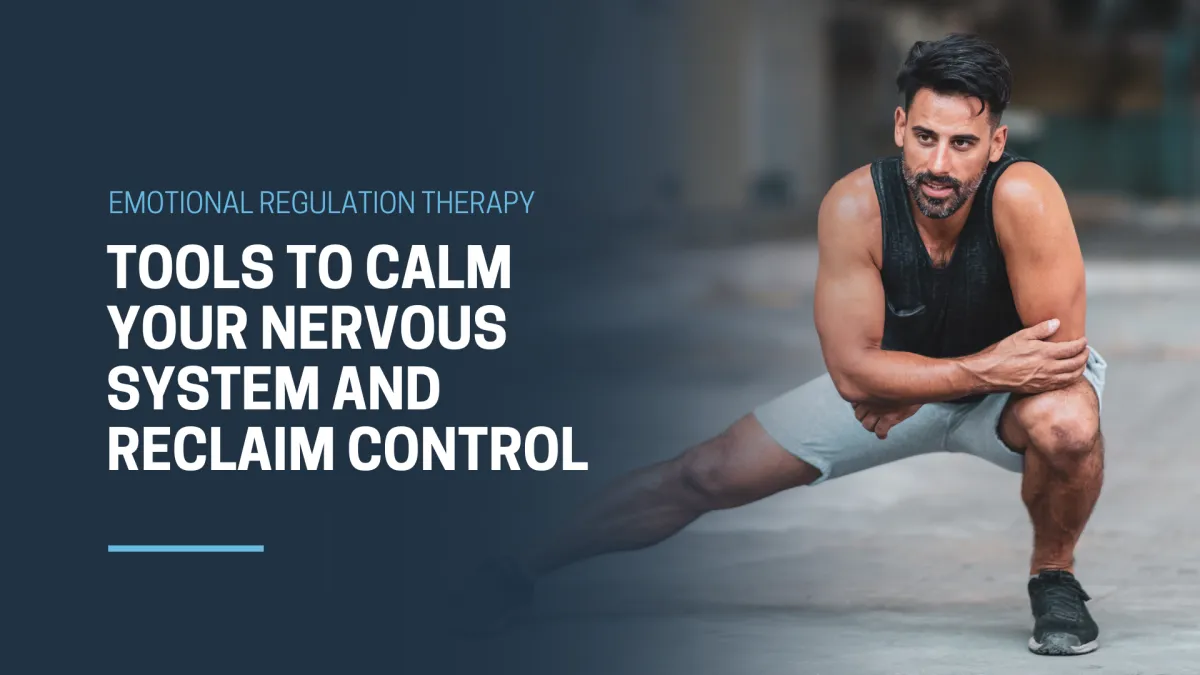
Emotional Regulation Therapy: Tools to Calm Your Nervous System and Reclaim Control
When life feels overwhelming, your emotions can take the wheel—leaving you reactive, exhausted, or shut down. But what if you could train your body and mind to stay steady, even in the face of stress? That’s the power of emotional regulation therapy.
Unlike quick fixes or mindset tricks, emotional regulation therapy focuses on rewiring the nervous system and subconscious patterns that fuel emotional dysregulation. It's not about suppression—it’s about creating safety and choice in how you respond.
In this article, we’ll explore how emotional regulation therapy works, why it's essential for trauma and anxiety recovery, and how SRI techniques support long-term emotional stability.
Why Emotional Regulation Is a Nervous System Skill
Emotional outbursts, chronic anxiety, and emotional shutdown aren’t signs of weakness—they’re signs that your nervous system is dysregulated.
When you feel unsafe, your brain shifts into survival mode: fight, flight, freeze, or fawn. This hijacks your ability to think clearly, communicate effectively, or stay present.
Emotional regulation therapy helps you:
Recognize early signs of dysregulation
Understand your emotional patterns
Learn body-based tools to regulate in real time
Rewire your default responses through subconscious work
As explained in this guide to how emotional regulation works, true emotional control starts with nervous system awareness—not willpower.
What Is Emotional Regulation Therapy?
Emotional regulation therapy blends psychological and somatic methods to help you regain control of your internal state. It’s especially powerful for those who:
Struggle with anxiety or emotional reactivity
Feel stuck in trauma responses
Find it hard to “snap out” of stress or overwhelm
Experience cycles of burnout or emotional flooding
Effective approaches include:
Breathwork and somatic grounding
Subconscious reprogramming techniques
Visualization and nervous system training
SRI (Subconscious Recalibration Integration) practices
This isn’t about “managing” your emotions—it’s about transforming how your body experiences and processes them.
SRI-Based Practices for Emotional Regulation Therapy
Subconscious Recalibration Integration (SRI) adds a unique dimension to emotional regulation therapy by combining body awareness, subconscious commands, and breath-based rituals.
Here are three powerful SRI tools for emotional regulation:
🌬️ 1. Coherence Breathing
Inhale for 4, exhale for 6
Visualize a wave of calm moving through your body
Repeat: “I am safe to slow down.”
This activates your parasympathetic system and reduces anxiety.
🧠 2. Emotional Pattern Reset
When triggered, place your hand on your heart
Acknowledge the emotion: “This is sadness / fear / anger.”
Follow with a subconscious command: “I choose peace in this moment.”
Naming the emotion + redirecting the nervous system creates space for new responses.
🌀 3. Grounded Repatterning Movement
Gently sway, walk, or stretch while breathing deeply
Say aloud: “This is a new way of being.”
Let the motion anchor the emotional shift in your body
These rituals reinforce the message: emotional safety is available.
The Benefits of Emotional Regulation Therapy
With consistent practice, emotional regulation therapy leads to:
Fewer emotional outbursts or shutdowns
Increased ability to stay grounded under pressure
Stronger self-awareness and emotional literacy
Faster recovery after stress or conflict
Deeper connection in relationships
Instead of being ruled by emotions, you learn how to ride them—and return to balance with confidence.
Conclusion: You Can Reclaim Emotional Control Without Force
Your emotional reactions are not broken—they’re patterned.
Emotional regulation therapy gives you the tools to shift those patterns through breath, awareness, and subconscious transformation. With SRI techniques, the change is not just felt—it’s embodied.
Ready to Regulate, Rewire, and Rise?
Let’s create a nervous system that supports the life you want to live.
👉 Book your consultation today and take the first step toward emotional freedom.
